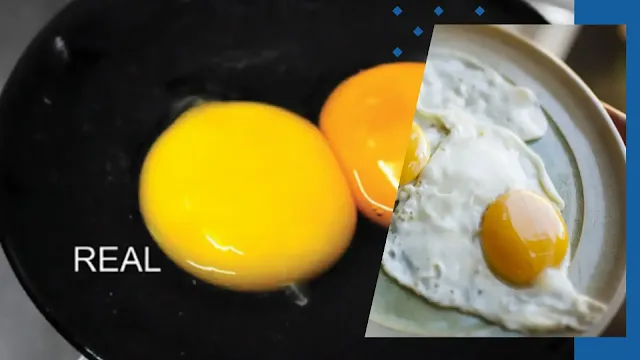Learn about the world of fake eggs and the materials used to create them. Discover the components utilized to make imitation eggs and discover the steps taken to produce these egg substitutes. Learn the truth about imitation eggs and how they fit into various dietary preferences.
Understanding Fake Eggs: Unraveling the Mystery
If you've ever heard rumors of "fake eggs" circulating in the food world, you might be wondering what they are. The concept of fake eggs may sound confusing, but it is necessary to shed some light on the subject. In this article, we take a closer look at the interesting world Of fake eggs, revealing what they are, how they are produced, and the consequences for consumers and businesses.
What are fake eggs?
Fake eggs, sometimes called "artificial eggs" or "synthetic eggs," are egg imitations created to mimic the appearance and to some extent the taste Of real eggs. These artificial eggs are created using different food ingredients, often to reduce costs or accommodate dietary restrictions.
How are fake eggs made?
Fake eggs, also known as artificial eggs or synthetic eggs, are usually made using a carefully selected combination of food ingredients to mimic the appearance and to some extent the taste of real eggs. The exact ingredients in fake eggs can vary from manufacturer to manufacturer, but here's a general overview of how they're typically made:
Basic ingredients: The main ingredients of fake eggs are usually starch, protein and various additives. These products are selected to recreate the texture, color and nutrient content of real egg whites and yolks.
Protein: The protein used in fake eggs usually comes from non-animal sources. Common sources of protein include soybeans, algae, legumes, and other plant-based materials. These proteins were selected for their ability to cook a texture similar to real egg whites.
Starch: Starch, usually from sources such as cassava or potatoes, is used to create the texture of egg yolks. This gives the mixture a thickness and smoothness similar to the natural consistency of egg yolks.
Additives: Various additives such as emulsifiers, colorings, flavorings and stabilizers are added to improve the overall taste, appearance and shelf life of fake eggs. These toppings have been carefully selected to create a convincing egg-like experience.
Mixing and processing: The selected ingredients are thoroughly mixed and processed into a homogeneous mixture. This mixture should resemble the texture and color of real egg whites and yolks. The specific technology and equipment used may vary by manufacturer.
Forming: The prepared mixture is formed into an egg shape, which can be a simple oval or a more detailed egg shape. These shapes help to mimic the appearance Of real eggs.
Improving texture and taste: Some manufacturers go to great lengths to improve the texture and taste Of their fake eggs. This may include additional processing steps to make the product more attractive to consumers.
It's worth noting that the exact process for making fake eggs can vary from manufacturer to manufacturer, and some companies consider their recipes proprietary secrets. The quality Of fake eggs can also vary greatly between brands, so consumers should be careful and research the product before making a choice.
For people with dietary preferences, allergies or dietary restrictions, fake eggs can be a suitable alternative, but only if the product meets safety and quality standards.
Why are fake eggs produced?
Fake eggs arise for a variety of reasons, each of which caters to different market needs and consumer preferences:
Economic reasons: Fake eggs are generally cheaper than real eggs, making them an attractive option for producers looking to reduce production costs. This could provide a cost-effective alternative in areas where egg prices are high.
Dietary preferences: Some people follow a vegetarian or vegan diet and avoid animal products. Fake eggs provide a cruelty-free, plant-based option for their dietary choices.
Allergies and Dietary Restrictions: For people with egg allergies or dietary restrictions, fake eggs can be a good substitute so they can enjoy egg-like foods without the associated health risks. Food Security: In areas where egg supplies are irregular or unreliable, fake eggs can provide a more stable and affordable source of nutrients.
Impact on consumers and businesses
For consumers, fake eggs offer a cost-effective, diet-friendly and more affordable alternative. However, the quality and safety of these products can vary widely from manufacturer to manufacturer, and consumers should exercise caution and do their research when considering fake eggs.
The production Of fake eggs can be a profitable venture for companies, but it is important to maintain transparency about the ingredients used and strictly adhere to quality standards. Using clear labels and certificates helps build consumer confidence.
In summary, fake eggs remain an interesting topic in the food industry, creating confusion and potential benefits for consumers and businesses. As the demand for nutritional alternatives and cost-effective options continues to grow, the role Of fake eggs in our food environment is likely to change, making it even more important for consumers to be informed and for companies to prioritize quality and transparency.

.webp)
0 comments:
Post a Comment